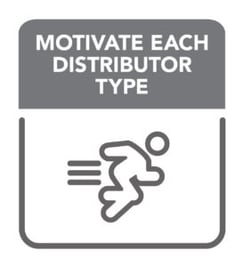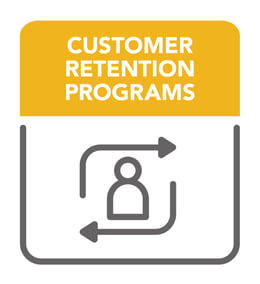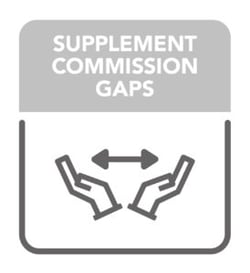
6 Things Every MLM Comp Plan Should Include [Improving Your Direct Selling Compensation Plan]
6 Things Every MLM Comp Plan Should Include [Improving Your Direct Selling Compensation Plan]
Every compensation plan is different, and for good reason! Payout plans and rank advancement requirements that work great for one business will totally derail the goals of another. The diversity in the direct selling industry makes it hard to know exactly what will work best for your plan. But, despite the stark differences between MLMs, there are some compensation plan dos and don’ts that will work for pretty much every direct selling organization. Here are six things that every MLM can (and should) incorporate into their comp plan.

1. A Flexible Core Commission
Every compensation plan can be identified by its core commission type. While this core commission probably won’t (and definitely shouldn’t) define your entire commission payout, it still plays a big role in how your company operates.
After you’ve put so much time and energy into choosing your commission, you’re likely not very open to making changes. As you know, small adjustments to your compensation plan can have a bigger impact than you intended if you aren’t careful.
While we don’t recommend making huge alterations to your core commission, it’s important to keep an open mind and a flexible outlook. Don’t let that single commission completely define your entire compensation strategy—remember that as time goes on and your business grows, you’ll need to make small changes for factors you can’t see coming yet.
Some companies also make the mistake of letting their core compensation dictate how everything else in their comp plan plays out. For example, we worked with a company that wanted their entire compensation plan to be based off of a 12-step unilevel model. Because they were so inflexible in adding other bonuses and supplements to their plan, their strategy had big gaps in paying distributors who were in different stages of growth and needed different things to be successful.
You’re much better off choosing a flexible core commission and expecting it to evolve slightly over time than setting that commission’s rules and structure in stone and allowing your company to be completely defined by that one commission.

2. Motivation for Each Distributor Type
Once you have an effective core commission type in place, the next thing to focus on is rewarding each kind of distributor in your organization. (You can find a description of each type here.) You’ll first want to find them, of course, and then look at the way your incentives are working to target the behaviors they best perform in your company.
We’ll use salespeople as an example. Salespeople have the important job of selling products to customers and to the consumer and social enroller distributor types. To make sure you’re correctly motivating salespeople, take a look at how much they’re earning in your compensation plan. Then, compare that amount to the number of hours it takes for them to earn their commissions. If salespeople can see that they’re paid very well for the effort they put into closing their sales, they’ll be much more motivated to continue doing what they do best.
Each distributor will have different motivations, and some need more attention and payment than others. Once you decide on the kinds of actions to reward in your plan, you can find the distributor groups responsible and adjust the ways you’re reaching them.

3. Rewards for Customer Acquisition
As you probably well know, focusing on customers is one of the most important shifts you can make in your compensation strategy as you move forward in the direct selling industry. Lots of customers means much better protection against the FTC!
For a lot of companies, this means a pretty big transition needs to be underway. As you take steps to be more customer-centric, why not involve your distributors? Adding a new bonus for customer acquisition can be a huge game-changer in your strategy. If distributors can see a difference in their paycheck for finding new customers, they’ll be much more inclined to help you make identifiable customers a bigger focus of your strategy.

4. Customer Retention Programs
Acquiring customers is a great first step, but if you want new customers to really make a difference in your bottom line, you need to have a strategy in place for retaining them.
This will look a lot different than retaining distributors, which we’ll go over below. Distributors need to know that the work they’re doing is important to you and that you’ll help them do it, while customers need information and opportunities to do their best work, which is purchasing your products.
You can start by keeping track of new customers, maybe by having them create a purchasing account or sign up as a preferred customer with email discounts. Once you have permission to contact them, you can start pampering them with flash sales, thank-you gifts, new product information and more.
The most important goal here is to show your customers that you value them and see this as a long-term relationship. If customers feel like they’re cared for and understood, they’ll be much more likely to become staunch supporters of your brand with their attention and their wallets.

5. Distributor retention incentives
Having customers is great and keeping them is better, but it’s hard to do either of those things with a highly fluctuating salesforce.
Distributors need even more attention than customers to be motivated to continue building a business with your company. So, what’s the key to retaining distributors? Like we said before, targeting each group with motivation to do the actions they’re good at is an essential first step.
But another important piece of the puzzle is boosting distributor earnings as they develop into their ideal distributor type. You can do this with special commissions or promotions that are geared toward making their transitions and rank advancements a little easier.
Here’s an example of an important commission boost: a distributor that wants to become a sales leader in a basic unilevel commission model will be really disappointed in her first few commission checks unless you have a way to help her earn a higher check as she’s starting out, using something like a starter bonus.
If this basic plan paid 5% on first-level earnings and this new distributor enrolls one new person beneath her, she’ll only make $5 for every $100 her new recruit makes in a commission cycle. Even though this plan will be great for her as she builds a bigger organization, it’s hard to be encouraged by a $5 check.
This is where that starter bonus can really make a difference! If your plan offers something like a 30% commission for brand-new distributors’ earnings, she’ll get a $30 check instead of $5 for the same amount of sales that her new recruit generates. A $30 check is much more rewarding, especially for the time she’s put into finding and training her new recruit. As she gets her feet under her and enrolls more people, you can taper off this starter bonus to merge into your standard model. The important thing is that your new distributor has tasted success early on and will be more motivated to keep trying and stick with your opportunity.
By identifying those key points in your distributors’ development, you can add bonuses that will encourage them to be more invested in your plan for the long haul.

6. Supplements to Fill in Commission Gaps
Even after making sure you’re doing all of the five things above to keep your MLM compensation plan in shape, you’ll likely still have areas that need some work in your plan. Keep in mind, too, that a lot of those areas can come and go. You might want to do a short-term product promotion, for example, or help distributors who are on the fence to move to the next rank in your plan.
It’s not really possible to prepare for all of these needs that will crop up in your company’s future. But what you can do is communicate to your salesforce that your compensation plan is subject to change, and that those changes are made to help them, not to confuse or hurt them. If distributors expect change, they won’t be derailed when something new comes along—instead, it’ll be something to look forward to and take advantage of.
While each plan will need specialized solutions to be successful, all MLMs will benefit by making sure they’re taking care of the areas above—if you can center your plan around a flexible core commission and then watch for key moments to encourage growth and provide individualized help and motivation, your compensation plan will work better for the way your specific distributors do their business for your company.
Want to learn more about understanding and improving your direct selling compensation plan? Give us a call or contact us here to learn more about our software tools and how they can help you maximize your success!


VP, Consulting Services, InfoTrax Systems
Steven Hooper is Vice President of Consulting Services at InfoTrax Systems. He’s worked as senior vice president, chief compensation strategist, controller, and compliance officer and headed up the technology and commissions groups for two global hypergrowth companies. Steve has a Bachelor of Science in Accounting and a Master’s in Accounting Information Systems. After launching a career in public accounting, Steve joined the direct selling industry and quickly acquired a passion and expertise for developing, implementing, and analyzing strategies in compensation, business information systems, and global market expansion.



